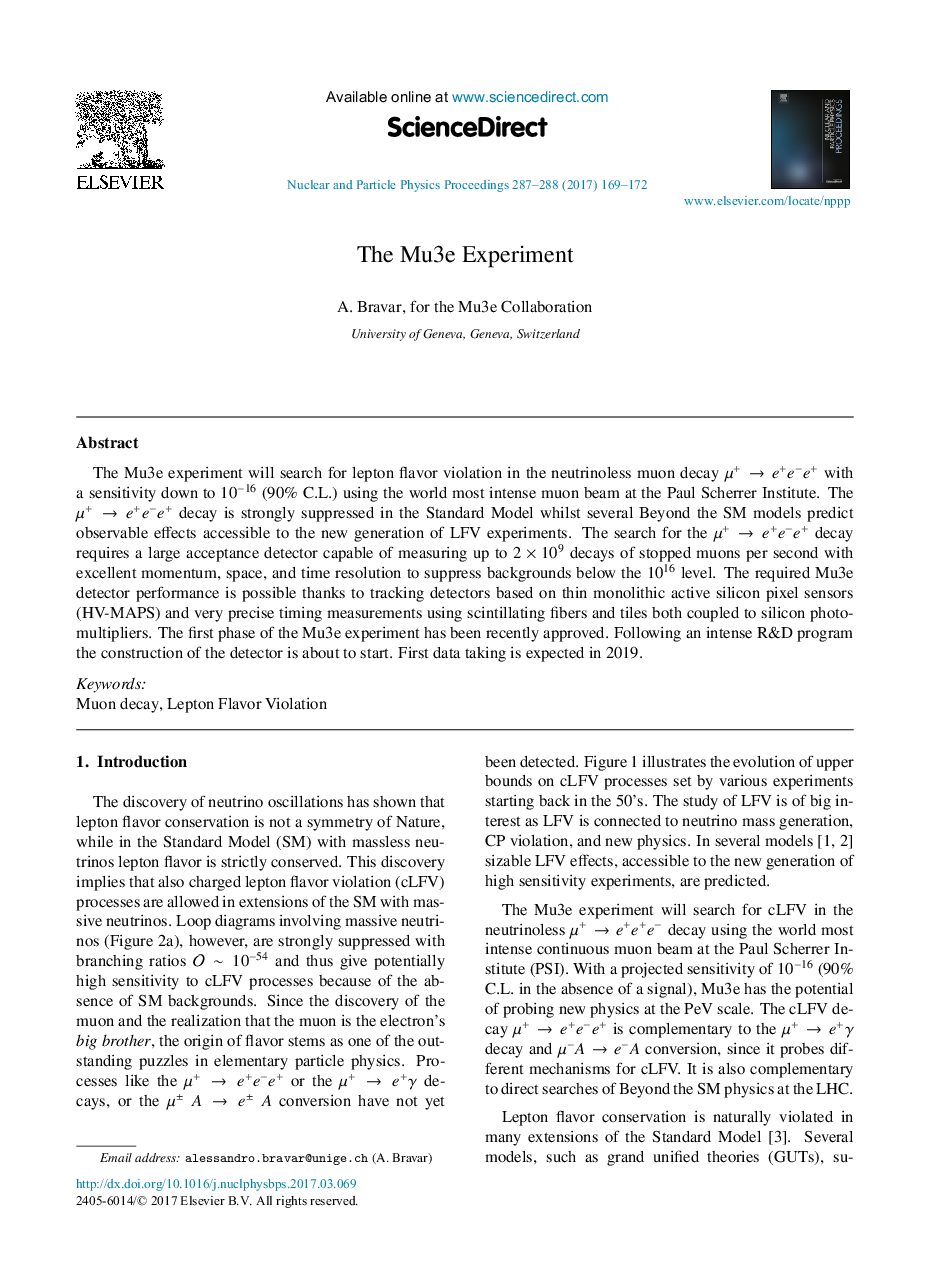| Article ID | Journal | Published Year | Pages | File Type |
|---|---|---|---|---|
| 5493617 | Nuclear and Particle Physics Proceedings | 2017 | 4 Pages |
Abstract
The Mu3e experiment will search for lepton flavor violation in the neutrinoless muon decay μ+âe+eâe+ with a sensitivity down to 10â16 (90% C.L.) using the world most intense muon beam at the Paul Scherrer Institute. The μ+âe+eâe+ decay is strongly suppressed in the Standard Model whilst several Beyond the SM models predict observable effects accessible to the new generation of LFV experiments. The search for the μ+âe+eâe+ decay requires a large acceptance detector capable of measuring up to 2 à 109 decays of stopped muons per second with excellent momentum, space, and time resolution to suppress backgrounds below the 1016 level. The required Mu3e detector performance is possible thanks to tracking detectors based on thin monolithic active silicon pixel sensors (HV-MAPS) and very precise timing measurements using scintillating fibers and tiles both coupled to silicon photo-multipliers. The first phase of the Mu3e experiment has been recently approved. Following an intense R&D program the construction of the detector is about to start. First data taking is expected in 2019.
Keywords
Related Topics
Physical Sciences and Engineering
Physics and Astronomy
Nuclear and High Energy Physics
Authors
A. Bravar, Mu3e Collaboration Mu3e Collaboration,
